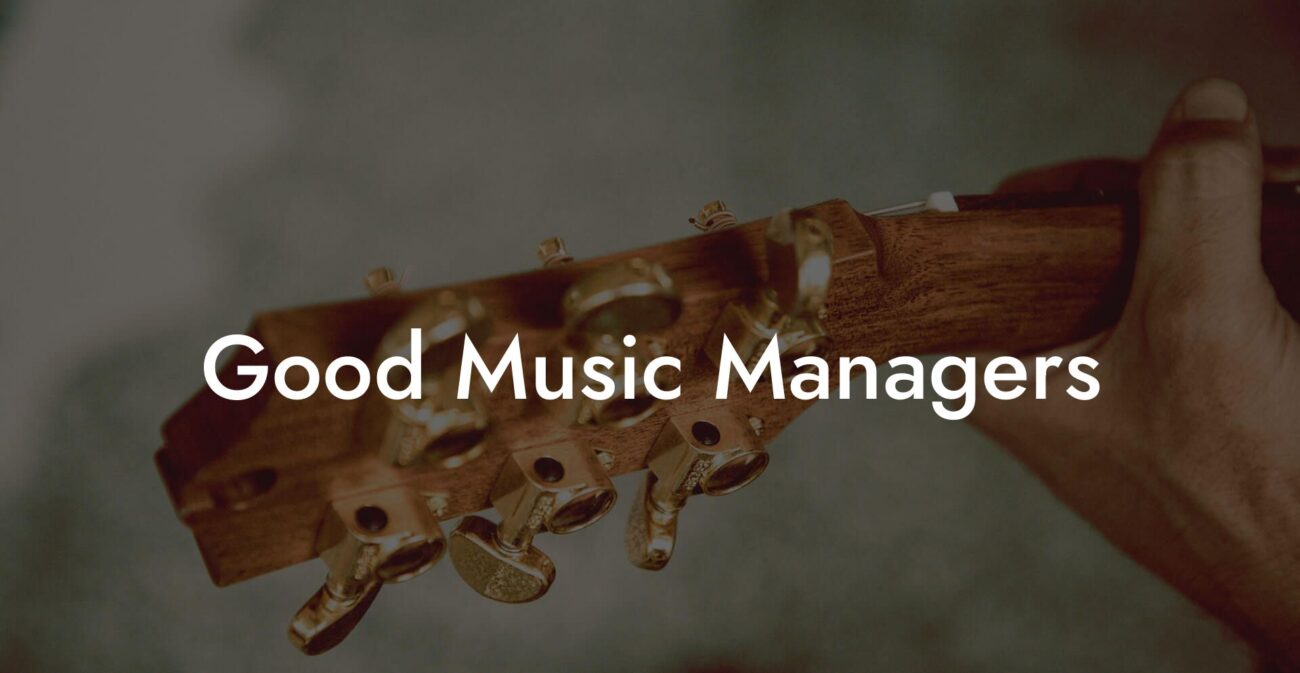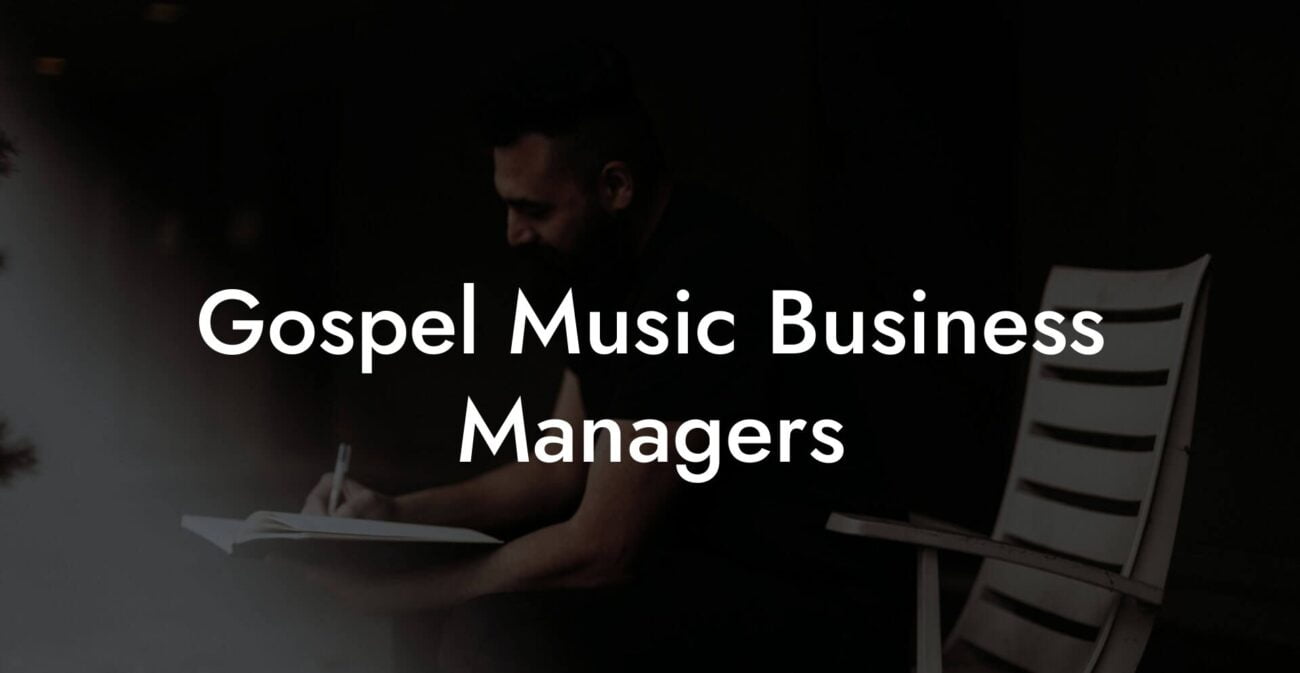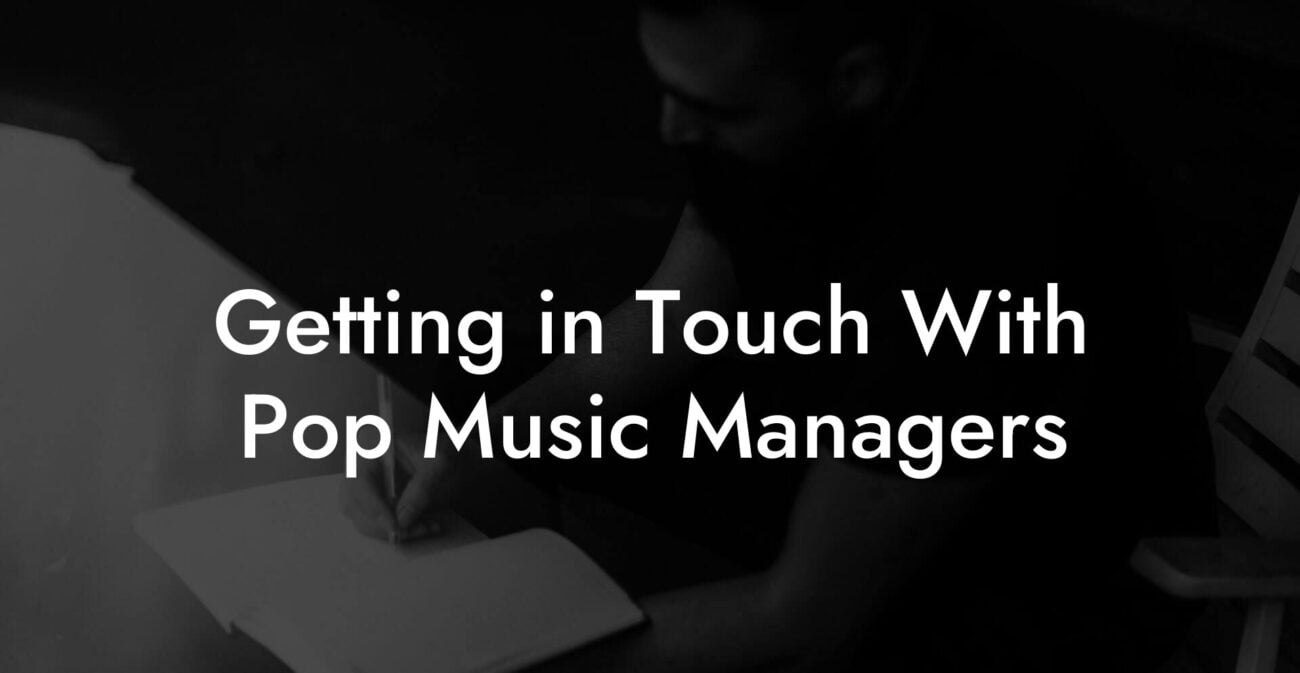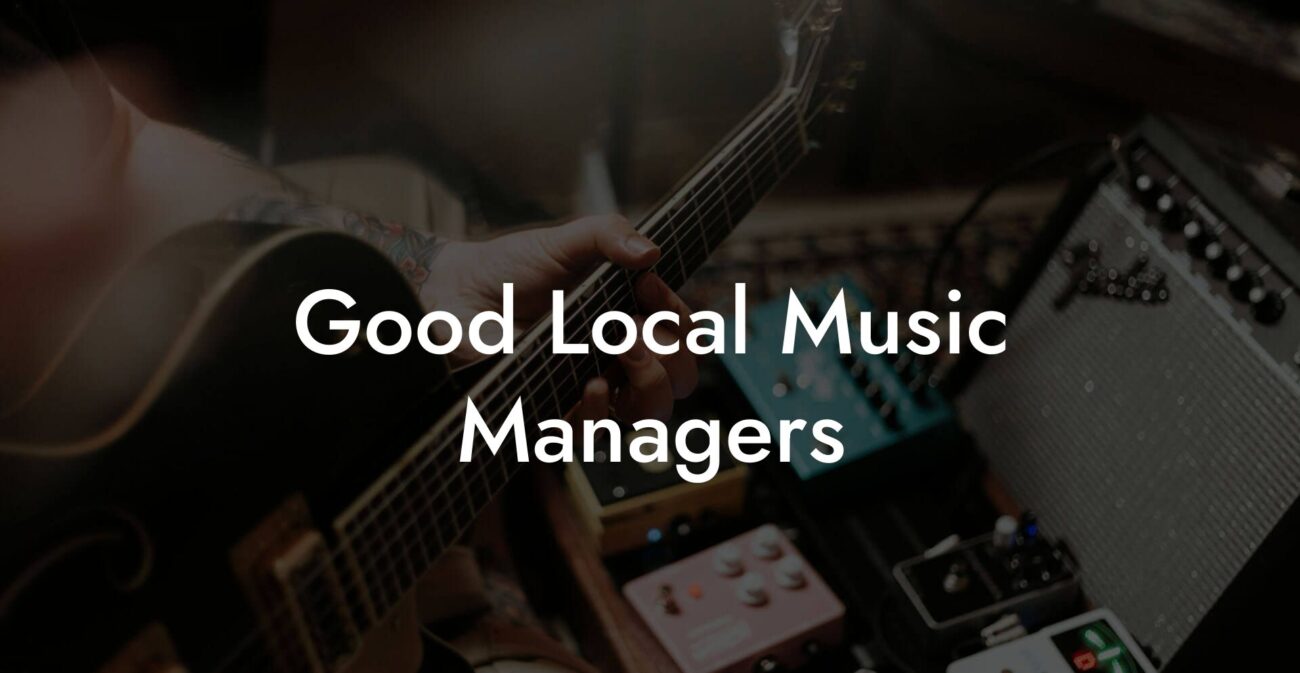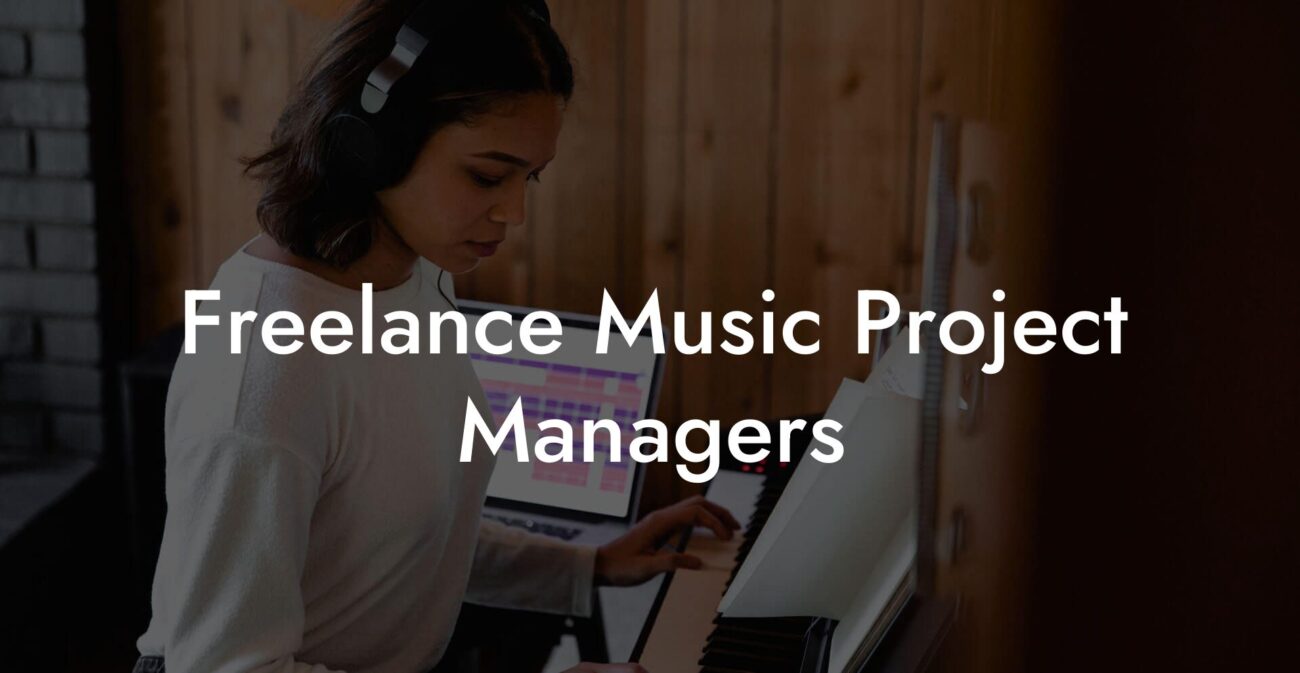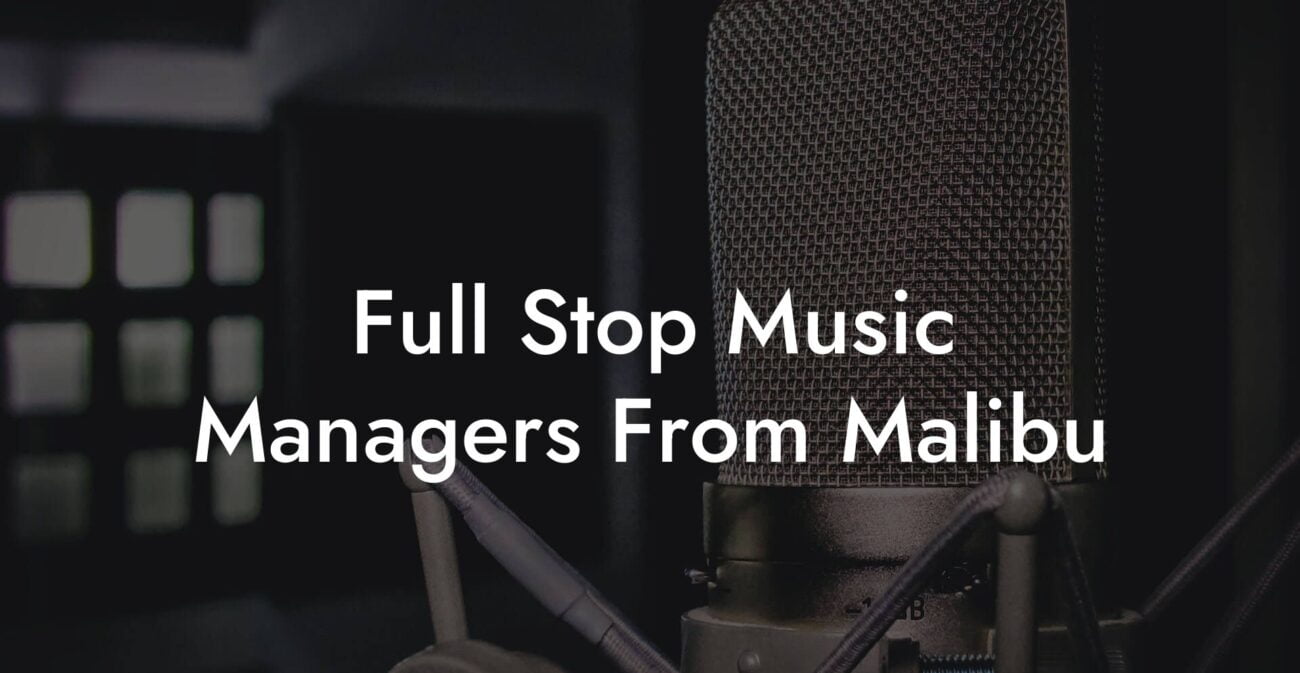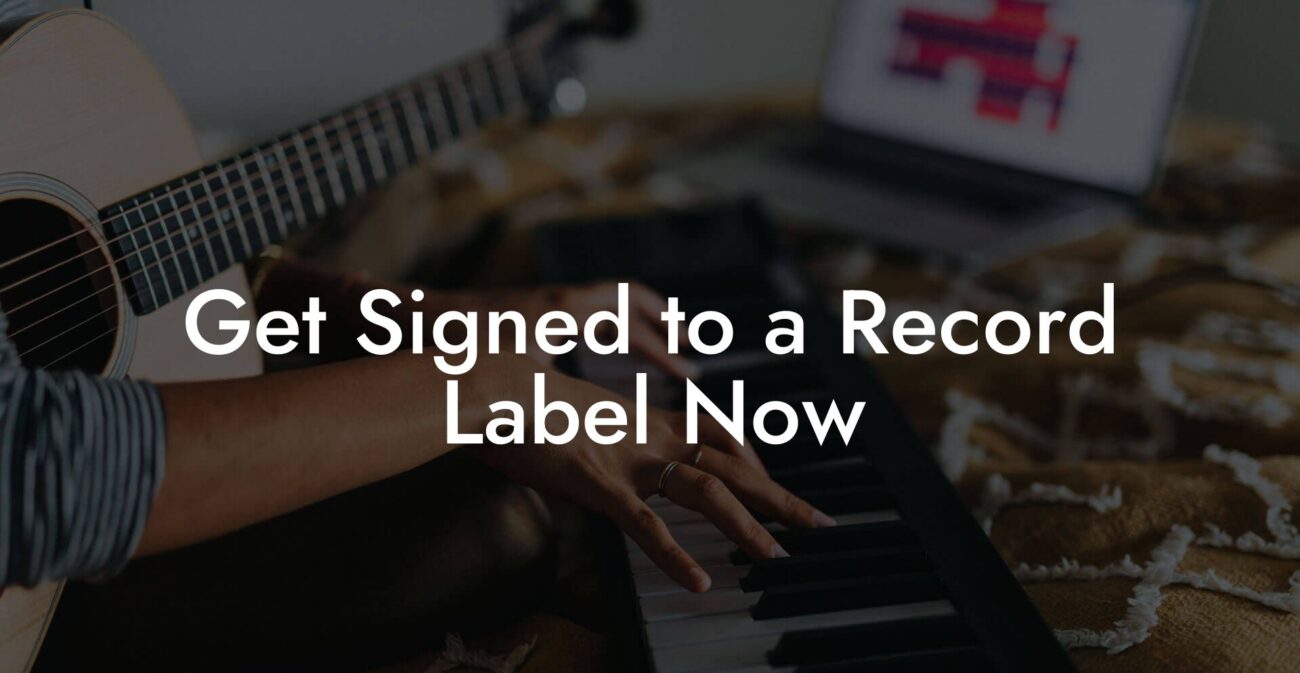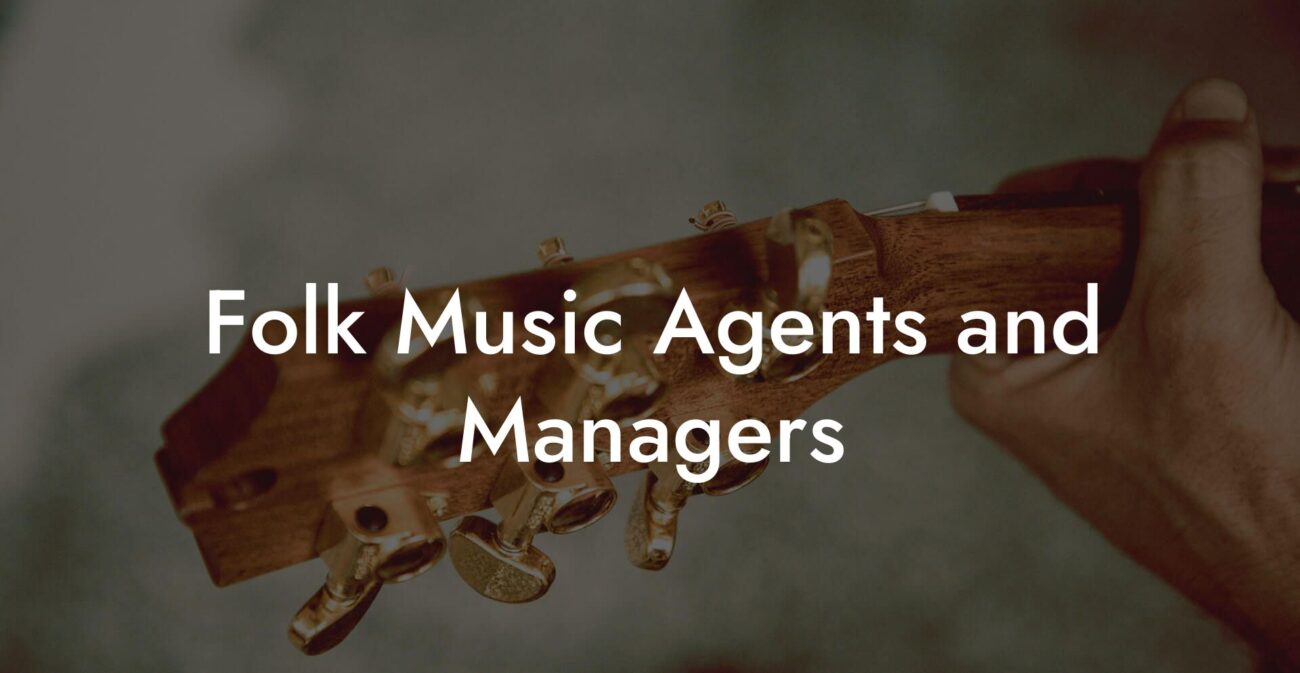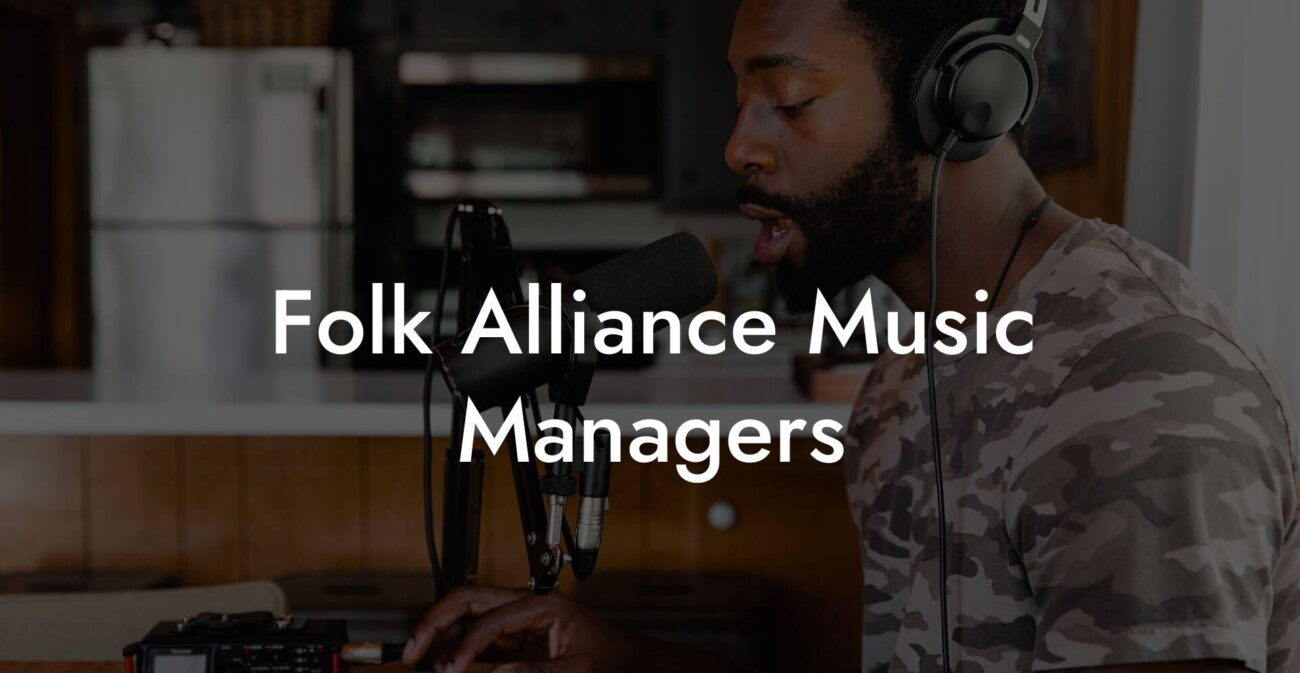Songwriting Advice
Create Your Own Mashup
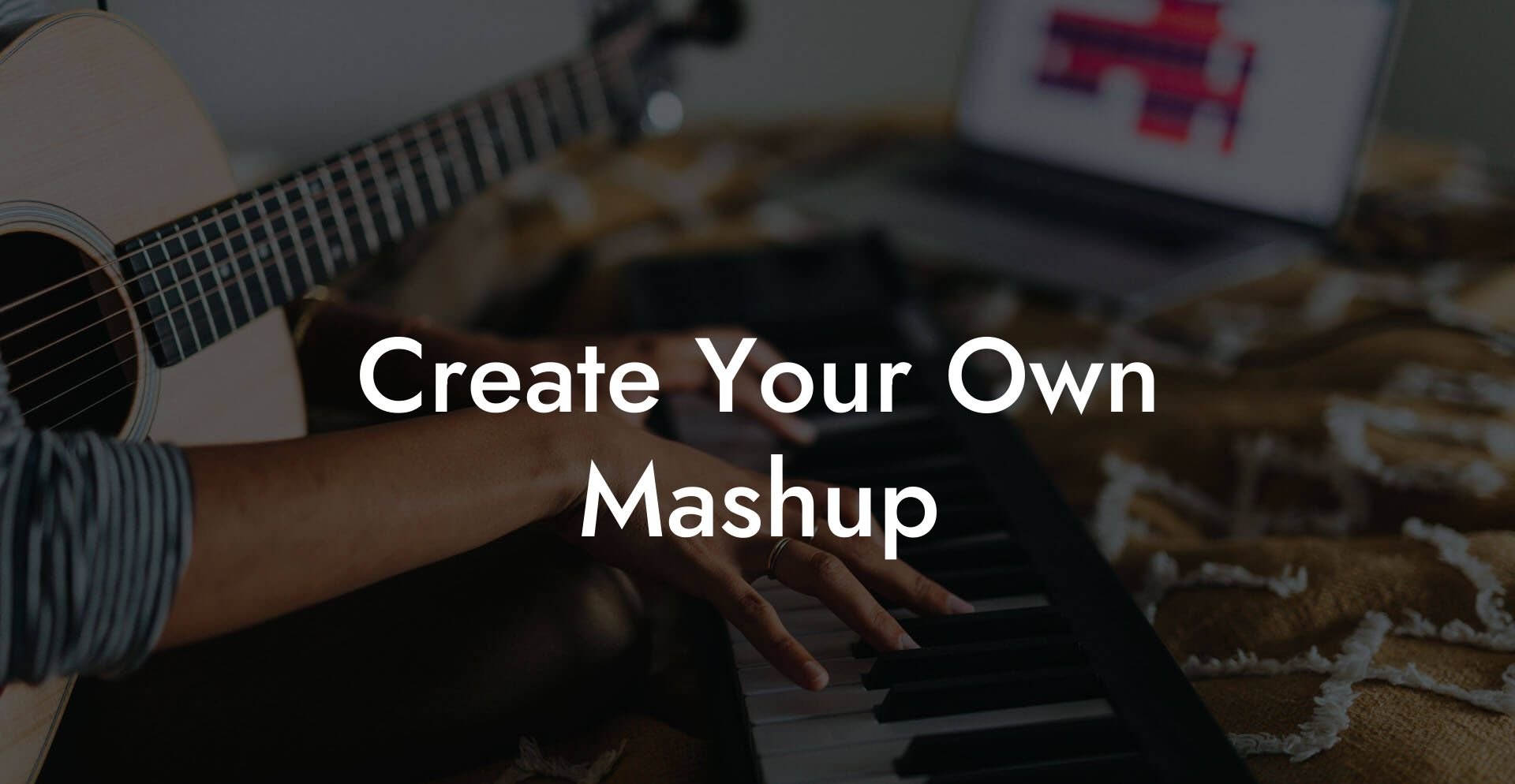
You want that moment when two songs collide and the crowd loses its mind. A mashup is the musical equivalent of sliding your old hoodie into a new outfit and suddenly looking like you got your life together. This guide gives you everything you need to do that on purpose. We will cover creative choices, technical tricks, legal reality, performance tactics, and promotion moves so your mashups sound professional and do not get you in trouble.
Quick Interruption: Ever wondered how huge artists end up fighting for their own songs? The answer is in the fine print. Learn the lines that protect you. Own your masters. Keep royalties. Keep playing shows without moving back in with Mom. Find out more →
Quick Interruption: Ever wondered how huge artists end up fighting for their own songs? The answer is in the fine print. Learn the lines that protect you. Own your masters. Keep royalties. Keep playing shows without moving back in with Mom. Find out more →
Quick Links to Useful Sections
- What Is a Mashup
- Types of Mashups
- Key Concepts and Terms Explained
- Idea Selection: Picking Songs That Actually Work
- Practical Workflow: From Idea to Rough Mix
- Step 1 Get the best possible sources
- Step 2 Detect BPM and key
- Step 3 Align structure
- Step 4 Time stretch and pitch shift
- Step 5 Clean up using EQ and gating
- Step 6 Add transitions
- Step 7 Compress and glue
- Step 8 Reference and fix
- Vocal Extraction Methods
- Harmonic Mixing and the Camelot Wheel
- Mixing Tricks That Make Mashups Sound Professional
- Release and Legal Realities
- Copyright basics
- Fair use myth
- Practical options
- Performance Tips for DJs and Live Acts
- Promotion Strategies for Your Mashup
- Common Problems and How to Fix Them
- Problem: Vocals sound thin or buried
- Problem: Timing feels off
- Problem: Pitch artifacts after shifting
- Problem: Legal flags on uploads
- Exercises to Build Mashup Muscle
- Checklist Before You Play or Release
- Tools and Resources You Will Actually Use
- How to Credit and Split Royalties When You Release
- Inspiration: Mashup Ideas You Can Try Today
- FAQ
- Action Plan You Can Use Tonight
This is written for artists, producers, and DJs who want to stop relying on luck and start building mashups that work every time. Expect practical workflows, real life scenarios, and the exact order of steps you can follow from idea to stage. We will explain every acronym and term so you never feel like you are reading an audio textbook while hungover.
What Is a Mashup
A mashup blends parts of two or more songs into a single performance or recording. Usually one track provides vocals and another provides instrumental backing. The goal is to create a new listening experience where the combination highlights both songs in a surprising way. Popular mashups make the listener say that the pair was inevitable once heard.
Real life example
- You sing the vocal from a 90s R B song on top of a modern pop beat. The chorus lands with new energy and people in the room immediately start shouting the title of both tracks.
Types of Mashups
Not all mashups are the same. Knowing which type you want helps you pick tools and tactics.
- Vocal over instrumental The classic. Use an acapella vocal over a different instrumental. Works great for sparking nostalgia with new production.
- Multi vocal blend Two or more vocals combined over one beat or alternating sections. Great for duet style moments.
- Instrumental collage Combine elements from multiple instrumentals while keeping one vocal. This is a playground for producers who love texture.
- Tempo switch mashup Use intentional tempo changes to create dramatic stops and starts. Requires careful time stretching or live tempo control.
- Live mashup Performed in a DJ set or live show using live looping or a controller. This is where improvisation meets controlled risk.
Key Concepts and Terms Explained
We will explain the technical terms you will see in this guide and in interviews where producers talk like the music store stole their common sense.
- DAW Stands for Digital Audio Workstation. This is the software where you arrange, edit, and mix audio. Examples include Ableton Live, Logic Pro, FL Studio, and Pro Tools.
- BPM Beats per minute. The tempo of a song. If one song is 90 BPM and another is 120 BPM you must either change tempo or pick a creative transition.
- Acapella A track that is primarily vocals with little or no instrumentation. Official acapellas are ideal. If you do not have one you can extract vocals with modern tools.
- Stems Separate audio files for each part of a track, for example vocals, drums, bass, and keys. Stems make mashups easier because you can place each element in your project with clean separation.
- Time stretch Changing the tempo of audio without affecting pitch. Useful when matching BPMs.
- Pitch shift Raising or lowering pitch without changing tempo. Used to match key.
- Key detection Finding the musical key of a song. Tools like Mixed In Key help. Matching keys or using compatible keys avoids clashing notes.
- EQ Equalization. The process of cutting or boosting frequency ranges. Use EQ to make room for vocals and avoid frequency mud.
- Compression Controls dynamic range. Compression can glue elements together so the mashup feels like one song.
- LUFS Loudness Units relative to Full Scale. This is a modern loudness standard used to make songs sound consistently loud on streaming platforms. Keep it in mind if you plan to release.
- Stem separation Using software to split a mixed track into its component parts. Tools include Spleeter, Lalal.ai, and iZotope RX. They work great but are not perfect.
Idea Selection: Picking Songs That Actually Work
Not every two songs will be a match. You want combinations that create contrast and support each other. Here are rules that sound mean but work.
- Pick a strong vocal Vocals with a clear melody and minimal overlapping instruments work best. If the lyric is too dense the mashup will feel crowded.
- Pick a complementary instrumental An instrumental with space in the mid range and a steady groove gives the vocal room to breathe.
- Find a harmonic relationship Use songs that share a key or are a fifth or a fourth apart. Those relationships are easiest to make musically pleasing. If you need to, pitch shift the vocal up or down one or two semitones to fit.
- Think contrast not copy Pairing two songs that are too similar rarely surprises. Contrast a mellow R B vocal with an upbeat house instrumental for maximum drama.
- Test the chorus first A fast way to know if the pair will work is to try the chorus of one over the chorus of the other. If the emotional center survives you are onto something.
Real life scenario
You are in the studio late on a Tuesday and want to test ideas. You drop a stripped down piano loop under a well sung pop vocal. It fits but it feels polite. You then try a garage bassline with the same vocal and suddenly it hits the chest. The contrast creates an earworm. Keep the garage bassline.
Practical Workflow: From Idea to Rough Mix
Follow this order for fewer wasted hours. Yes you will still waste some hours. That is called research.
Step 1 Get the best possible sources
Official stems or acapellas are ideal. Search digital stores, remix packs, and label pages. If you perform live and want to use a track you own on vinyl or CD you can work from that too. For recording releases you will need clearance but we will cover that later.
Step 2 Detect BPM and key
Load both tracks into your DAW or a key detection tool. Tools like Mixed In Key will tell you both BPM and the musical key with a simple interface. If one track is 100 BPM and the other is 95 BPM you can time stretch. If the keys are two semitones apart you can pitch shift the vocal or the instrumental.
Step 3 Align structure
Decide which sections you want to overlap. Cutting straight to the chorus works most of the time. Use a grid in your DAW. Make sure the bars line up. If the original songs have different bar lengths, create a loop region and nudge until it feels locked.
Step 4 Time stretch and pitch shift
Apply time stretching to match BPMs. Use high quality algorithms labeled complex or pro mode if your DAW calls it something like that. For pitch shifting, aim for minimal shift. One or two semitones is safe. When you must shift more, check for artifacts such as warbling. If artifacts appear try a different algorithm or re pitch the other track instead.
Step 5 Clean up using EQ and gating
Use EQ to carve space. Cut low end from the vocal if the instrumental has a prominent bass. Use a high pass filter around 80 to 120 Hz on vocals to prevent muddiness. If the instrumental has vocals or competing mid range, carve frequencies with narrow cuts to make room for the lead vocal.
Step 6 Add transitions
Transitions make the mashup feel deliberate. Use drum fills, risers, reverse cymbals, or a vocal chop as a bridge. Silence is also a transition. A one bar drop before the chorus can make the chorus hit harder.
Step 7 Compress and glue
Use light bus compression on your mix to glue elements. A short attack and release settings help keep transients while controlling dynamics. Do not over compress. Mashups need life.
Step 8 Reference and fix
Compare your mashup to tracks you admire. Listen on headphones and monitors. Fix any frequency clashes or timing slips. Take breaks between listening sessions to keep perspective.
Vocal Extraction Methods
Sometimes you do not have an official acapella. Here are options ranked by quality and cost.
- Official acapella or stems Best quality and legal clarity. Check artist or label pages, remix packs, and official release stems.
- Stem separation services Paid services like iZotope RX, Lalal.ai, and PhonicMind use advanced machine learning. They work well for splitting vocal and instrumental. Expect some artifacts depending on the mix.
- Open source tools Spleeter is a free tool created by a company called Deezer. It is powerful but may require technical skills to run. Good option if you love a little chaos and terminal windows.
- DIY phase inversion Works only if you have an instrumental version that is perfectly aligned with the mix. You invert the phase of the instrumental and sum it with the full mix to cancel out common elements. This can produce an acapella but only under very specific conditions.
Real life scenario
You found a long remix of a song on SoundCloud and no one uploaded the acapella. You use an online separation service and the vocal comes out clear enough for a club mashup. For a digital release you will still need to clear the use of the vocal with the rights holders.
Harmonic Mixing and the Camelot Wheel
Harmonic mixing is a technique DJs use to blend songs that will not clash musically. The Camelot wheel is a visual tool that maps musical keys to numbers that are easier to mix mentally.
How the Camelot wheel works
- Each key is assigned a number and letter for major or minor. For example 8A might represent a minor key and 8B its relative major.
- Move one number clockwise or counterclockwise for a safe mix. For example 8A mixes well with 7A and 9A. Moving to 8B is a relative major minor shift and usually sounds good too.
Real life example
You have a vocal in 6A and an instrumental in 7A. The change is just one step on the wheel. You pitch the instrumental down a semitone and the two keys lock beautifully. If you tried to pair 6A with 12B the result would be unpleasant unless you adjust pitch drastically.
Mixing Tricks That Make Mashups Sound Professional
Small mixing decisions make a mashup feel polished.
- Create space with sidechain compression Sidechain the instrumental bass or pads to the vocal to keep the voice forward. Sidechaining is an automated volume ducking where the presence of the vocal reduces the level of the instrument slightly so the vocal cuts through.
- Use subtractive EQ Cut rather than boost. Remove problem frequencies and let the remaining qualities shine.
- Give vocals character Add a touch of parallel compression for presence and a small plate reverb for space. Keep reverb short on vocals in a dance context to maintain clarity.
- Automate interest Automate panning, filter cutoff, or reverb send to create movement between sections. Small automation makes the transitions feel intentional.
- Maintain stereo width Keep low end mono and widen higher frequencies. This avoids cancellation on club systems and streaming compression artifacts.
Release and Legal Realities
Making a mashup is fun. Releasing it publicly is a legal landmine if you walk into it barefoot. Here is what to know without the lawyer voice.
Copyright basics
There are two separate copyrights in most popular music. One is for the composition. This covers lyrics and melody and is controlled by the song publisher. The other is for the sound recording. This covers the actual recorded performance and is controlled by the record label or the artist if they own their masters. When you make a mashup you are creating a derivative work. To release that work you usually need permission from both the composition rights holders and the master rights holders.
Fair use myth
Fair use is a legal doctrine that allows limited use of copyrighted material without permission in some contexts such as commentary, criticism, or education. It is not a safe harbor for mashups intended as commercial releases or planned to be monetized. The rules are complex and outcomes vary by country. Do not assume fair use protects your mashup on commercial platforms.
Practical options
- Live performance only Playing mashups in clubs and concerts is usually safe under the venue's public performance license. Venues often pay organizations that license performances. Check the terms with the venue.
- Watermarked or free upload for promotion Some artists release mashups on SoundCloud or YouTube as promotional tools. Be prepared for takedowns or revenue sharing claims. Use the platforms privacy settings or remove monetization to reduce legal friction but not to guarantee safety.
- Get clearance Contact the publisher and label for permission. This can be expensive and time consuming but it is the proper route for commercial release. Some services like Tracklib provide licensed stems for sampling and remixing for a fee.
- Use royalty free vocals and instrumentals Use content licensed under Creative Commons with commercial use permission or buy vocal packs and stems that include license for derivative works.
Real life scenario
You made a mashup that went viral on social media. A label reaches out and offers a licensing deal to officially release the track. You now negotiate splits and credits. This is the time to involve a lawyer or a publishing administrator if money matters to you.
Performance Tips for DJs and Live Acts
Mashups hit harder live if you plan the energy. Here are tactical tips for both DJs and live performers.
- Prepare cue points Set cue points for the first downbeat of a chorus and for any transition hits you will use. This saves you from trying to find a beat while twenty people are singing.
- Practice the switch Run through the mix transition ten times before you play it live. Human timing is not as reliable as the DAW grid. Practice makes muscle memory.
- Bring stems if possible If you use a DJ setup that supports stems or multi channel audio you can control instrumental and vocal levels independently on stage. This gives you flexibility to adjust for crowd reaction.
- Use vocal chops as call and response Create a chopped vocal tag that you repeat live to create crowd participation. A tag is a short vocal fragment that becomes your signature in the set.
- Have a fail plan If a mashup does not lock live move to a safety track. A safety track is a song you can drop immediately to regain control of the room.
Promotion Strategies for Your Mashup
Great mashups can be viral content. Use the following moves to get attention without sounding like every other mood board of your band.
- Create a visual hook Match the mashup with a short video that shows the two source songs in a clever way. Fans of both tracks will share it because it is fun and recognizable.
- Tag the original artists If they find it funny or clever they might repost. Be polite and say it is a fan mashup or a promo edit unless you have permission to call it a remix.
- Offer stems for remix contests Release an instrumental or isolated vocal for fans to remix. This creates user generated content and builds hype.
- Pitch to DJs and playlists Send your mashup to DJs who play similar genres. Curated playlists are harder to crack but mixes and radio shows still love strong mashups.
Common Problems and How to Fix Them
Problem: Vocals sound thin or buried
Fix by carving space with EQ from the instrumental and adding presence through parallel compression. Add a subtle de esser to control sibilance. Consider a narrow boost around 3 to 5 kHz if the vocal needs air. Do not overboost or the vocal will sound harsh.
Problem: Timing feels off
Use transient aware time stretching and nudge slices to line up with the grid. If the vocal is slightly ahead or behind the beat cut into small segments and align the downbeats manually. Keep musical phrasing intact when you slice.
Problem: Pitch artifacts after shifting
Try a different algorithm or pitch the other track instead. Sometimes pitching the instrumental is sonically preferable to pitching the vocal. If you must pitch the vocal use formant shifting to preserve natural timbre.
Problem: Legal flags on uploads
Use the platforms claim systems to accept revenue sharing or remove the upload if necessary. For long term release get license agreements. If you plan to sell the mashup hire a clearance service or a music lawyer who knows publishing.
Exercises to Build Mashup Muscle
Work these exercises into your practice to get faster and better.
- One chorus in ten minutes Pick a vocal and an instrumental and make a rough mashup of just the chorus in ten minutes. This is a speed drill to teach you intuition.
- Key swap drill Take a vocal and shift it up two semitones. Make adjustments to keep it natural. Compare the swapped version to the original and note what changed in perceived emotion.
- Stem separation lab Use different separation tools on the same song and compare artifacts. Learn which tools work best for which genres.
- Live mashup set Build a five minute live mashup and perform it for friends or at an open mic. Live testing reveals timing issues you will not hear in the studio.
Checklist Before You Play or Release
- Do I have a clean master for streaming or for the club
- Are the BPM and key locked
- Does the vocal sit clearly in the mix
- Are transitions smooth and practiced
- Do I have permission to release this commercially
- Do I have all stems backed up and labeled
- Is the LUFS level appropriate for my target platform
- Did I add one signature sound or tag to own the moment
Tools and Resources You Will Actually Use
Software and services you should consider. You do not need all of them. Pick what fits your budget and workflow.
- Ableton Live Great for arranging and live performance. Warping tools are excellent for time stretching.
- Logic Pro Powerful DAW with solid stock plugins. Good for mac users focused on production and mixing.
- FL Studio Popular for beat makers and fast workflows.
- Reaper Affordable and flexible. Great if you like customizing your setup.
- Mixed In Key Key detection and harmonic mixing assistant for DJs.
- Spleeter Free stem separation tool if you are comfortable with a bit of setup.
- Lalal.ai and PhonicMind Paid online stem separation services that are fast and user friendly.
- iZotope RX Industry standard for audio repair and vocal isolation.
- Serato and Traktor DJ software that supports tempo sync and some stem features for live mashups.
- Tracklib A sample licensing platform that can help you clear samples legally.
How to Credit and Split Royalties When You Release
If you plan to release a mashup officially you will negotiate splits with the rights holders. The exact split depends on how much of each original was used and bargaining power. Typical steps for a clean release include getting mechanical licenses and master use licenses, registering the new arrangement with a performance rights organization if applicable, and setting credits for the original writers and performers.
Real life scenario
You mash two songs where the vocal topline carries most of the emotional weight and the instrumental is reworked but clearly derived. Expect the publishers to ask for a significant share. If the mashup becomes a hit you will be glad you documented communications and contracts from day one.
Inspiration: Mashup Ideas You Can Try Today
- Take a stripped back folk vocal and drop it on a deep house instrumental for late night chills.
- Pair a classic R N B chorus with a minimal techno rhythm to make a song feel timeless and fresh.
- Use an unexpected language swap like a Spanish verse with an English pop chorus for cross cultural fireworks.
- Turn a Broadway show tune into a stadium pop moment by re arranging the harmony and boosting the drum energy.
FAQ
What is the easiest way to start making a mashup
Start with a clean acapella and a simple instrumental you love. Match BPM using time stretch and match key with small pitch shifts. Align the chorus sections first. Clean up frequency clashes with EQ and glue everything with a gentle bus compressor. This workflow gives the fastest route to a playable rough mix.
Can I use mashups in my DJ set without permission
Playing mashups live at a club or event is usually covered by the venue public performance license. For recorded releases it is different. If you plan to upload the mashup to streaming platforms or sell it you will need permission from rights holders.
How do I get an acapella if there is none officially available
Use stem separation tools or services. Spleeter is free and powerful but requires technical setup. Paid services like Lalal.ai and PhonicMind are user friendly and deliver quality extractions quickly. Keep expectations realistic. Extraction is not perfect and often needs cleanup.
Will pitching a vocal ruin the emotion
Slight pitch shifts of one or two semitones usually do not ruin emotional quality. Formant control helps keep the voice natural. If you need to shift more you may change the perceived character of the singer. Test different options and choose the one that preserves intent.
How should I credit the original songs
Always credit original writers and performers in metadata and release notes. If you obtain clearance the rights holders will often provide exact credit requirements. Proper credit helps maintain professional relationships and avoids disputes.
Is it safe to post mashups on YouTube and SoundCloud
Platforms have content identification systems. You may be flagged, monetization may go to the rights holders, or the content may be blocked. Some creators use uploads as promotional demos and accept takedowns. For long term or commercial plans get clearance first.
Can I sell beats or instrumentals that include samples used in mashups
If your instrumental contains copyrighted samples you do not own you need to clear those samples before selling. Using royalty free sample packs or original recordings avoids this issue. Sample clearance is often the costliest part of releasing sampled music.
What tools are best for live mashups
Ableton Live with a controller that supports clip launching is a top choice. DJ software like Serato or Traktor is great for tempo sync and quick mixing. Hardware such as CDJs and controllers with multiple decks gives hands on control. Choose tools that match your performance style.
How do I make my mashup stand out
Add a signature sound or a vocal tag that identifies you. Use contrasts that surprise listeners while keeping the mashup musical. Simple production additions such as a short vocal counter melody or a unique percussion loop can make the mashup feel owned by you.
Action Plan You Can Use Tonight
- Pick one vocal and one instrumental you love. Keep them to songs under four minutes so your edits are manageable.
- Detect BPM and key with a tool like Mixed In Key or within your DAW. Note them.
- Load both into your DAW grid. Align the chorus sections and time stretch as needed until the groove locks.
- Use EQ to carve space for the vocal. Automate a small reverb send for presence.
- Practice the transition a few times. Record a rough mix and listen on a phone, headphones, and monitors.
- If you plan to post the mashup publicly, research if official stems exist or if you need to ask for permission.


